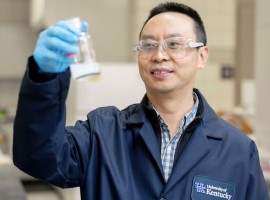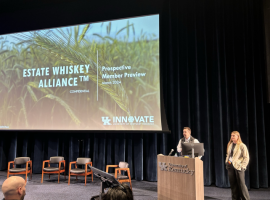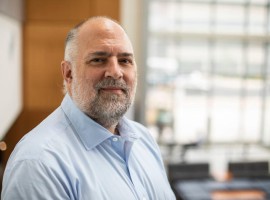UK Superfund Research Student Brad Newsome
Fifth-year graduate student Brad Newsome is developing composite nanomaterials for sensing and capture of PCBs, toxic compounds at Superfund sites in Kentucky and around the world. Polychlorinated biphenyls (PCBs)—a class of hazardous chemicals used in coatings for electronics, sealants, adhesives, paint, and flame retardants—were banned in the 1970s, but these toxic compounds continue to linger in groundwater and soil.
Newsome’s research focuses on creating a nontoxic way to address pollution by incorporating membrane filtration and magnetic separation with natural antioxidant polymers that bind organic pollutants. He is taking this research to Southeast Asia, through the Fulbright program, where he will develop water remediation techniques to deal with the rapid production of environmental pollutants in Cambodia.
Kentucky has more than 200 hazardous waste sites on the active list for control, cleanup or monitoring under the federal Superfund program. One such site is the Paducah Gaseous Diffusion Plant, the only operating uranium-enrichment plant in the United States and one of the top 14 sites on the EPA's national priority list.





